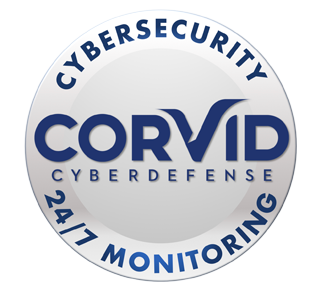 Most of the nation’s teachers and K-12 educational employees are members of their state’s public pension plans. After years of service, these plans have promised a secure retirement for educators and support staff. Unfortunately, a significant number of public pension plans serving these employees were severely underfunded before the Great Recession.5 The situation was compounded by the COVID-19 pandemic, pushing this program and educators further into debt. It’s now more important than ever that teachers have a plan to supplement their pensions with their savings.
Most of the nation’s teachers and K-12 educational employees are members of their state’s public pension plans. After years of service, these plans have promised a secure retirement for educators and support staff. Unfortunately, a significant number of public pension plans serving these employees were severely underfunded before the Great Recession.5 The situation was compounded by the COVID-19 pandemic, pushing this program and educators further into debt. It’s now more important than ever that teachers have a plan to supplement their pensions with their savings.
With the recent pandemic, an option to take early retirement was presented to many educators. If you find yourself over age 55, this option may provide a desirable option even if it comes with financial constraints. You’ll want to consider how early retirement will affect your pension benefits, healthcare eligibility, and tax implications.
If you’re evaluating the decision to retire, there are a few steps that you can take now to determine if you’re on track financially. Before taking any next steps, we recommend a discussion with your financial professional.
What are my projected retirement expenses? You can better understand how much money you’ll need each month by adding up all your necessary living expenses and desired discretionary spending. If you’re having trouble estimating your expenses, a good starting point is to use 85% of your current pre-retirement monthly expenditures.
What are my sources of income? Identify any income sources from Social Security, pension, and other savings programs. You’re looking for consistent income sources, not a one-time influx of cash.
How much of a financial gap will I need to cover? The “four percent” rule was popularized in previous decades and meant that retirees could safely take out 4%-4.5% of their portfolio each year. In volatile markets, you’ll want to take a personalized approach to strategizing. Any gap between your guaranteed income and your expenses may need to be covered by withdrawals from your retirement savings.
If you discover you’re going to fall short of your income needs, it’s time to make some financial adjustments. Depending on your financial plan, it might make sense to start by increasing your savings and contributing as much as possible to a tax-advantaged retirement account. Next, talk through options such as delaying retirement, downsizing, or even working part-time during your retirement.
As you navigate your transition from work to retirement, we’re here to serve as a resource for you and your family. If you have questions, or want to review your options, call us today at (540) 720-5656.
- Adapted from FIG Education Industry Whitepaper























 Megan Jones joined the ILG Financial team in 2020 as marketing director. Megan and her husband live in Fredericksburg, VA with their German Short Haired Pointer, Gus. Megan is a graduate of Longwood University and holds a degree in communications. Megan is the oldest of Dave Lopez’s three children and not only enjoys working alongside her father, but also with her cousin, Chase, who joined the ILG Financial team in 2020 as an advisor. Megan is also a fully licensed Life, Health, and Annuity agent. When not at work, Megan enjoys sitting on the back porch with family and friends enjoying food and music.
Megan Jones joined the ILG Financial team in 2020 as marketing director. Megan and her husband live in Fredericksburg, VA with their German Short Haired Pointer, Gus. Megan is a graduate of Longwood University and holds a degree in communications. Megan is the oldest of Dave Lopez’s three children and not only enjoys working alongside her father, but also with her cousin, Chase, who joined the ILG Financial team in 2020 as an advisor. Megan is also a fully licensed Life, Health, and Annuity agent. When not at work, Megan enjoys sitting on the back porch with family and friends enjoying food and music. Chase Lopez joined the ILG Financial team in 2020 as an advisor. Chase is a 2016 James Madison University graduate with a degree in management. Chase has been trained under the tutelage of Dave Lopez, who is not only the founder and managing member of ILG Financial, but also is Chase’s uncle and godfather. He also enjoys working alongside his cousin, Megan, who is Dave’s daughter.
Chase Lopez joined the ILG Financial team in 2020 as an advisor. Chase is a 2016 James Madison University graduate with a degree in management. Chase has been trained under the tutelage of Dave Lopez, who is not only the founder and managing member of ILG Financial, but also is Chase’s uncle and godfather. He also enjoys working alongside his cousin, Megan, who is Dave’s daughter. Amy Anderson joined the ILG Financial team in 2023 as the client relations coordinator. Her responsibilities include scheduling of appointments, annual check-up notifications, and annuity and required minimum distribution assistance. She is a graduate of Harding University with a degree in Computer Information Systems. Amy and her husband have two children and she enjoys reading, crocheting, music and spending time with her family.
Amy Anderson joined the ILG Financial team in 2023 as the client relations coordinator. Her responsibilities include scheduling of appointments, annual check-up notifications, and annuity and required minimum distribution assistance. She is a graduate of Harding University with a degree in Computer Information Systems. Amy and her husband have two children and she enjoys reading, crocheting, music and spending time with her family. Jessica Carson joined the ILG Financial team in 2018 as an agent. Jessica and her husband have four children, two dogs, 3 barn cats, 5 chickens, and three parakeets. She indeed loves her children and pets! When not at work, Jessica enjoys playing the piano and cello as well as traveling and spending time outside with her family, hiking, fishing, and boating.
Jessica Carson joined the ILG Financial team in 2018 as an agent. Jessica and her husband have four children, two dogs, 3 barn cats, 5 chickens, and three parakeets. She indeed loves her children and pets! When not at work, Jessica enjoys playing the piano and cello as well as traveling and spending time outside with her family, hiking, fishing, and boating. Terri Center joined the ILG Financial team in 2019 as client services manager. She handles client records, application processing, and gathering information to provide a professional and friendly experience with all of our clients. Terri is a graduate of Oakland University. She is married and has two children. She enjoys hiking, family time, and puzzle challenging video games. She also likes to share her creativity in her canvas paintings and sewing projects.
Terri Center joined the ILG Financial team in 2019 as client services manager. She handles client records, application processing, and gathering information to provide a professional and friendly experience with all of our clients. Terri is a graduate of Oakland University. She is married and has two children. She enjoys hiking, family time, and puzzle challenging video games. She also likes to share her creativity in her canvas paintings and sewing projects.